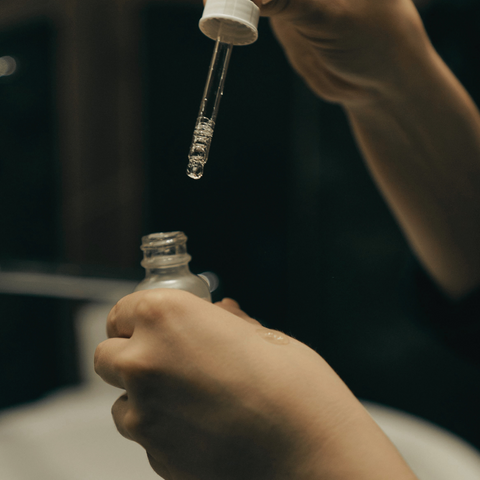Hyaluronic acid is a viscous substance that lubricates and moisturizes, and is part of the joints, the eye and the dermis. It is widely used in aesthetic medicine and in different specialties such as dermatology, ophthalmology and osteoarticular diseases.
What is hyaluronic acid?
Essentially, it is a type of molecular sugar that is actually present in your body, found in the epidermis, connective tissues, cartilage, synovial fluid, eyes and many other organs and tissues.
However, like many things in the human body, as we age, it diminishes and its presence in the body is reduced over the years, which is when our skin loses hydration, which translates into loss of elasticity and firmness, becoming flaccid and this gives way to the appearance of wrinkles.
Something similar happens with the joints, as the cartilage becomes more rigid, increasing the possibility of fractures and the sensation of pain with each movement due to the friction between the bones. Some sources mention that by the age of 50, half of the body's hyaluronic acid remains.

The types that exist
Now that you know what hyaluronic acid is, we want to tell you that there are three different types of this polysaccharide: hyaluronic acid, hyaluronic and hyaluronan and although they have more or less different names, they are the same thing.
The difference between these compounds is actually the size of the molecular chains. This difference is very important because the skin absorbs them differently. What is hyaluronic acid used for on the face? It all depends on the type of acid used:
Long chain . It does not have the ability to penetrate the skin but creates a film that provides elasticity to the skin and has an anti-inflammatory effect.
Short chain . It is able to penetrate the skin thoroughly, making it possible to maintain the hydration, volume and firmness of the dermis. This also reduces wrinkles.
Benefits of hyaluronic acid
According to a publication in Advances in Food and Nutrition Research Hyaluronic acid is an excellent resource for biomedical applications such as osteoarthritis surgery, eye surgery, plastic surgery, tissue engineering and drug delivery. It also plays an important role in cushioning and lubricating the body.
Generally, it is known for its ability to bind water to tissue. In fact, a molecule of hyaluronic acid is able to retain 1000 times its weight in water. For this reason, it is often used in skin treatments, especially those related to wound healing and the prevention of premature aging.
Helps keep skin supple
As explained in a research published in Dermato-Endocrinology About half of the body's hyaluronic acid is present in the skin, where it binds to water to help retain moisture. For this reason, supplementing with this substance helps keep the skin healthy and supple.
It has rejuvenating properties.
There is no miracle formula to prevent the signs of aging. However, the use of hyaluronic acid has been accepted as a good complement to reduce wrinkles and other signs of aging.

According to a study published in the International Journal of Biological Macromolecules , hyaluronic acid-based formulations, such as gels, intradermal injections, lotions, etc., exhibit nutricosmetic efficacy. This is due to their ability to hydrate, stimulate collagen and elastin production, and restore facial volume.
Hyaluronic acid and eye health
It keeps the eyes moist, promoting the exchange of nutrients. It also works as a lubricant through the vitreous humor. Its presence is of utmost importance to maintain healthy vision, especially when we undergo surgery.
The reason? According to studies, solutions containing 0.2–0.4% hyaluronic acid reduce dry eye symptoms and improve eye health.
Gives volume to the lips
Currently, one of the most popular aesthetic procedures to improve the shape of the lips is the application of hyaluronic acid. A study published in the Journal of Cutaneous and Aesthetic Surgery concluded that filling with this substance was well tolerated, efficient and long-lasting after being used to enlarge the upper lip.
Strengthens gums
According to research published in the North American Journal of Medicine & Science , hyaluronic acid provides strength to the ligaments so that our gums can support the structure of the mouth. Hyaluronic acid hydrates the connective tissue so that the attachment of the teeth to the bone is stronger . It has become a very important component in oral health.

Take care of our hair health
Although there are not many studies that demonstrate the benefits of hyaluronic acid for hair, it is a widely used substance to revitalize damaged hair. Supplements and products containing this substance apparently moisturize the scalp and improve the density of fragile hair.
A recent study published in BioMed Research International has shown that hyaluronic acid has beneficial effects on the cells of the dermal papilla. In this sense, the product is believed to promote the growth of new hair follicles and the maintenance of existing ones.
Protects bones and keeps them strong
Hyaluronic acid not only takes care of the strength of the jaw bones. It is a very suitable supplement for athletes, as it increases bone strength.
In fact, a study published in the Journal of Biomedical Materials Research points out that high doses of hyaluronic acid contribute to increasing the activity of osteoblasts , cells responsible for building new bone tissue.
It is a lubricant for the joints
Some studies have considered the use of this acid to reduce joint pain, more specifically those located in the knees due to wear and tear.
Even recent research, such as one published in Clinical and Translational Medicine, shows that combining oral hyaluronic acid supplements with injections may help increase the benefits against osteoarthritis pain.

Helps in wound healing
Another of the great benefits of this molecule is that it promotes the healing process of wounds. A study published in the Journal of Pharmacy and Pharmaceutical Sciences showed that extracts of this substance are safe and effective products for use in skin repair .
Medical applications of hyaluronic acid
The different uses of hyaluronic acid in medicine are found within the areas of rheumatology, traumatology, aesthetic medicine and ophthalmology .
Aesthetic medicine : use for facial rejuvenation. Hyaluronic acid is used as facial filler to remove wrinkles, dark circles and in areas with loss of volume. It is administered by infiltration, that is, it is injected into the area to be treated. There are different types of hyaluronic acid commercially available for this use. This practice is not without risk or side effects, from mild (redness, bruising, irritation) to more serious ones such as lumps/hardening on the treated area.
Dermatology : It is used in mouth ulcers to relieve symptoms and promote healing.
Ophthalmology : It is used in various types of ophthalmologic surgery (cataracts, retinal detachment, etc.). It is injected into the eye during surgery to help replace natural fluids. It is also used as a moisturizer in eye drops for dry eyes.
Osteoarticular diseases : osteoarthritis and trauma. In the field of rheumatology and traumatology, the use of hyaluronic acid has become widespread. Among the different indications, its use has been established for its clear efficacy in osteoarthritis of the knee. The greatest clinical experience and the greatest number of scientific studies have been carried out in osteoarthritis of this joint.

Hyaluronic Acid: How Does It Help Your Skin?
Well-hydrated skin looks firmer and brighter . On the other hand, hyaluronic acid, being able to act as a “sponge” to retain water in the skin, gives it volume and visibly reduces wrinkles, expression lines and revitalizes the upper layers of the skin, making it look incredibly healthy with proven effects and results.
This effect on your skin also translates to:
Maintains the correct structure of the skin
-
It retains water in the epidermis, as it hydrates naturally.
Facilitates cell repair
Helps to “fill in” wrinkles and fine expression lines

https://www.acofarma.com/blog/los-beneficios-del-acido-hialuronico-para-la-piel/
https://www.laroche-posay.es/article/que-es-el-acido-hialuronico-y-para-que-sirve
Sudha, P.N., & Rose, M.H. (2014). Beneficial effects of hyaluronic acid. In Advances in Food and Nutrition Research (Vol. 72, pp. 137–176). Academic Press Inc. https://doi.org/10.1016/B978-0-12-800269-8.00009-9
Troiano, P., & Monaco, G. (2008). Effect of hypotonic 0.4% hyaluronic acid drops in dry eye patients: A cross-over study. Cornea, 27(10), 1126–1130. https://doi.org/10.1097/ICO.0b013e318180e55c
Dahiya P, Kamal R. Hyaluronic Acid: a boon in periodontal therapy. N Am J Med Sci. 2013;5(5):309–315. doi:10.4103/1947-2714.112473
https://www.isdin.com/blog/para-que-sirve-acido-hialuronico/
https://www.nivea.com.mx/consejo/acido-hialuronico
https://mejorconsalud.as.com/8-beneficios-acido-hialuronico/
https://www.salud.mapfre.es/cuerpo-y-mente/belleza-y-salud/acido-hialuronico-para-que-sirve/




Comments (0)
There are no comments for this article. Be the first one to leave a message!